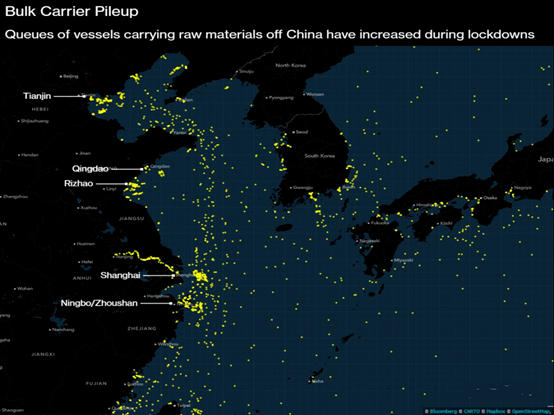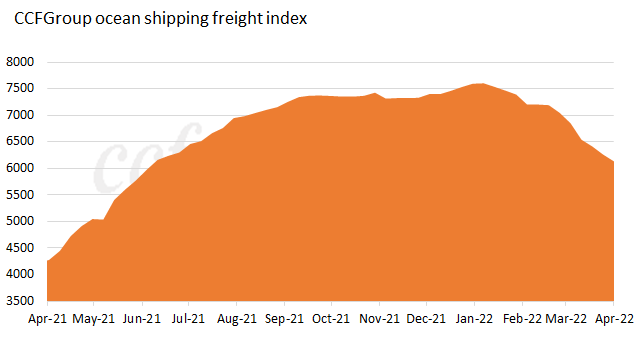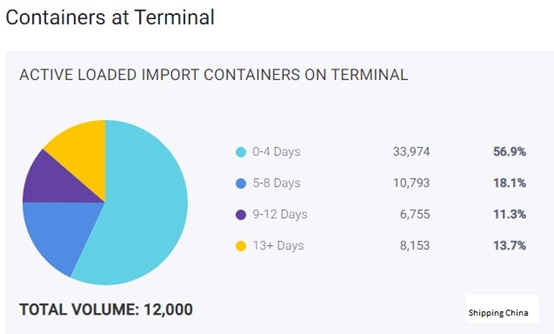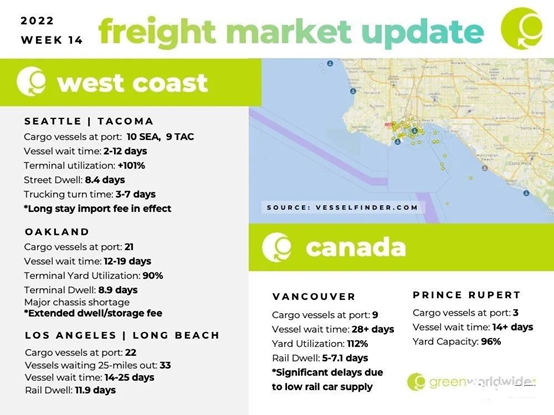Influence of China's COVID restriction on container marine market
The COVID-19 epidemic continues to spread around the world. Due to the extremely high transmission power of the Omicron variant, the daily new cases around the world keep hovering at a high level, and the epidemic situation remains grim. The epidemic has worsened in some parts of China since late-Mar, especially in Shanghai, Jiangsu and Zhejiang, which has aroused much concern.
Ports news
Shanghai port has implemented closed-loop management on the in-and-out of trucks. Restrictions on truckers and container haulage units traveling between Shanghai and cities in adjacent provinces including Jiangsu, Anhui, and Zhejiang will make it virtually impossible for manufacturers in those provinces to deliver products. Many cargos were stagnated after operation efficiency apparently decreased. Some other nearby ports saw eased restriction but serious queuing was seen. The measures of pandemic prevention and control also intensified in regions like Ningbo after the pandemic spread worsened. Actually, some shipping companies like MAERSK, ONE and ZIM Intergrated Shipping and so on have announced to omit Shanghai port due to the efficiency and entrance of trucks encountered problem although the port and terminal operations remain operational.

Actually, the number of ships waiting for in the waters near the port of East China surged. At least 477 cargo ships loaded with raw materials such as metals, ores and grains, as well as containers were congested at ports in East China waiting for customs clearance recently.
According to the notice from Shandong province, in order to realize the closed-loop management of imported high-risk non-cold chain goods, imported goods entering Shandong must enter the centralized supervision warehouse to implement the static period system, and the storage capacity should meet the warehousing requirements of the total amount of imported goods within 10 days. Different types of imported goods should be classified and stored, and only after the negative nucleic acid test results of the batch of goods have been obtained can they leave the warehouse.
Firstly, 10-day static period means it is urgent to apply for centralized supervision warehouse, while it has high difficulty. Secondly, for the owners of cargos, their cost will face risk to increase. For the ports, rising unloading fee and the losses of partial customers will be the direct impact. The original intention of setting the 10-day static period is to effectively curb the transmission of the virus from cargos to person. If not, what is the risk?
Previously, the new cases of Omicron variant infection in Shenzhen and Zhuhai were speculated to be spread by international express. However, infection through international express was still a corollary, and there was no conclusive evidence that these cases were caused by contact with objects. A number of disease control experts also said that although the virus can spread through the surface in a very short time, there is insufficient evidence to spread through the surface after a long time. Ordinary goods arriving at the port have been floating at sea for a few days to more than 20 days, and have passed the window for the spread of the virus.
Chinese government has urged to make every effort to ensure the smooth flow of international maritime logistics supply chain. However, due to the new COVID restrictions, port congestion and trucking issues, mainly in Shanghai, have impacted market and will be a great challenge if sustains long.
Freight news

According to the data collected by CCFGroup, the freight from China to Bangladesh/Chittagong was at US$5,600/40HQ, that to Indonesia/Jakarta was near US$2,200/40HQ, and that to Pakistan/Karachi was around US$3,800/40HQ.
European route
The spread of pandemic sustained grim in Europe, and the daily new infections shivered at high level. Geopolitical risk kept intensified in Europe due to the Russia-Ukraine conflict and market faced many risks. Future economy has big uncertainty. Transportation demand remained largely stable and the freight fell from high level. The operation in Shanghai port was largely stable and the freight on European route.
North America route
The pandemic prevention and control remained grim in US. Cumulative number of confirmed cases and deaths have been very high. The recent economic data in the United States have performed well, but as the inflation rate continued hitting a record high, the Federal Reserve has been forced to withdraw from loose policy to control inflation, and the subsequent economic growth faces the loss of loose policy support. The transportation demand kept good, with unchanged supply and demand. The freight from Shanghai to W/C America inched down but that of E/C America Service increased in recent one week.
Congestion crisis emerges again in USWC
The detention time of shipping containers in United States West Coast has increased in recent weeks, and last year's congestion may appear again in USWC.
According to the Pacific Merchant Shipping Association (PMSA), the average length of stay of containers in Long Beach increased from 3.5 days in January to 5.2 days in February. According to related report, the situation worsened further in March, about 7 days.


Forwarders and importers have transferred some of their imports from Asia to ports on the east coast or the Gulf of Mexico. The proportion of containers imported from Asia on the west coast of the US fell to a low of 58.2% in February from 62% last year, according to IHS Markit.
Based on the report from McKinsey, the freight rates will remain high until congestion is eased. It is estimated that congestion has effectively reduced the capacity of trans-Pacific container ships by nearly 25%. It is warned that if current congestion levels do not fall by the end of 2022, the freight rates may be 25-50% higher by 2023 than those in 2019.
- Top keywords
- Cotton Price
- Cotton Futures Price
- Cotton Futures
- CZCE
- PTA Futures Price
- Chemical Fiber
- Polyester Prices
- Wool price
- PTA Futures
- Shengze Silk
- China
- Yarn Price
- price
- China Textile City
- Fibre Price
- Benzene Price
- Cotton
- Index
- Cotton Index
- PTA
- fabric price
- NYMEX
- Top 10
- textile industry
- Spot Cotton
- Cotton Yarn
- Polyester Price
- Futures
- PTA Price
- cotton yarn price

